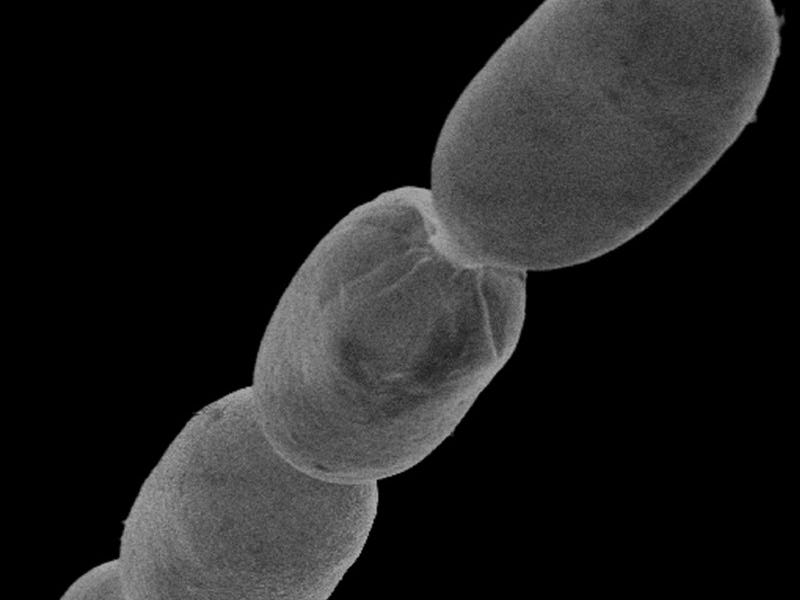Researchers discover the biggest bacteria ever, and it’s the size of an eyelash
Plus: The science behind centuries-long tortoise lifespans

The mangroves of the Caribbean bristle with life. White herons spear fish with their bills and black and red crabs skitter over the sprawling, spidery tree roots.
Then, beneath the water, thin, white filaments float like dust. They may not look like much — but in reality, these tiny organisms are by far the biggest bacteria scientists have ever seen.
This is an adapted version of the Inverse Daily newsletter for Monday, June 27, 2022. Subscribe for free and learn something new every day.
Hi friends, welcome to Monday. Time to wake up your brains for the week ahead. We’ll start with something tiny (bacteria), and work up to a story that’s 23,000 lightyears away. Thanks for being here!
Happy 150th birthday, buddy.
Reptile longevity is even more complex than we imagined, new study finds
Tortoises can live up to 190 years. Tuataras, a reptile found in New Zealand, have surpassed 100.
A new study in the journal Science attempts to tease apart exactly how it is that these reptile species can live so long. It is the largest study on reptile longevity to date, examining 77 different species, from sea snakes to burrowing lizards.
Researchers explored evidence behind four factors that could contribute to the long lifespan of these animals; for example, thermoregulation. The idea is that reptiles save energy by not constantly warming their internal body temperature. Therefore, they can devote more energy to other life-sustaining functions.
Though only a fraction of reptiles and amphibians surpass a century, the ones who have may be able to help us better understand aging.
The mangroves that house bacteria like Thiomargarita magnifica.
The largest bacteria known to science breaks all the rules
There’s a new bacteria in town, and it’s unlike anything scientists have ever seen. Named Thiomargarita magnifica, the giant microbe was found in the mangroves of Guadeloupe. Unusually, it is visible to the naked eye. In fact, it is 4,500 times longer than most bacteria.
“This sets a new record that will be hard to beat,” says Danny Ionescu, who studies microbial ecology at the Leibniz Institute of Freshwater Ecology and Inland Fisheries in Berlin.
Other attributes also set T. magnifica apart. Bacteria are simple, and their DNA typically floats freely inside them. But when the scientists looked under the microscope, they found the DNA and ribosomes clustered together in many tiny pockets, each surrounded by a membrane. No free-wheeling genetic information here.
According to researchers, the discovery of the giant T. magnifica has raised a seemingly infinite supply of questions. It might even challenge concepts in bacterial genetics as we know it.
Oh my stars, telescopes rock.
Hubble images show a glittering cluster of stars 23,000 lightyears away
Globular clusters are tightly packed groups of tens of thousands — or even hundreds of thousands — of stars, bound by gravity into a dense glittering sphere about 100 light years wide.
The Hubble Space Telescope recently captured a dazzling image of one, known as Terzan 9, near the center of the Milky Way. It may help astronomers better understand the origins of globular clusters.
Terzan 9, which is 23,000 lightyears away, exists in a cosmic neighborhood that’s heavily populated with stars and clouds of interstellar dust. The dust absorbs most wavelengths of light, obscuring the stars behind it.
In the past, that’s been a problem for astronomers. A star’s brightness and colors tell scientists what it’s made of. But Hubble’s instruments are sensitive enough to pick out the effects of the dusty filter and reveal the stars’ true colors.
Please don’t trash this place.
Reel Science: Wall-E reveals a dark debate over humanity’s future
Released by Pixar in 2008, Wall-E was ahead of its time on AI sentience, automation of the workforce, and interstellar travel. But perhaps the movie’s most timely theme is its complicated environmental message.
In case you need a plot refresher: the film takes place on a trash-filled and abandoned planet, starring a garbage-collecting robot known as Wall-E. It is an early example of “climate doom” in a movie, although the trend keeps growing — in response to real life.
“Climate doom” isn’t an official term, but informally, it’s what climate scientists and activists use to refer to the belief that we cannot save the world from climate change. And abandoning Earth, as in Wall-E, is the ultimate climate doom scenario.
So, does this Pixar movie predict the future? Inverse writer Tara Yarlagadda hopes not. In Reel Science, an Inverse series that reveals the real (and fake) science behind your favorite movies and TV, she writes, “The future laid out in Wall-E is grim, but not inevitable.”
About this newsletter: Do you think it can be improved? Have a story idea? Want to share a story about the time you met an astronaut? Send those thoughts and more to newsletter@inverse.com.
- On this day in history: On June 27, 1954, the world’s first nuclear power plant launched in the Soviet Union, beginning a new era of history.
- Song of the day: “Spitting Off the Edge of the World ft. Perfume Genius” by Yeah Yeah Yeahs